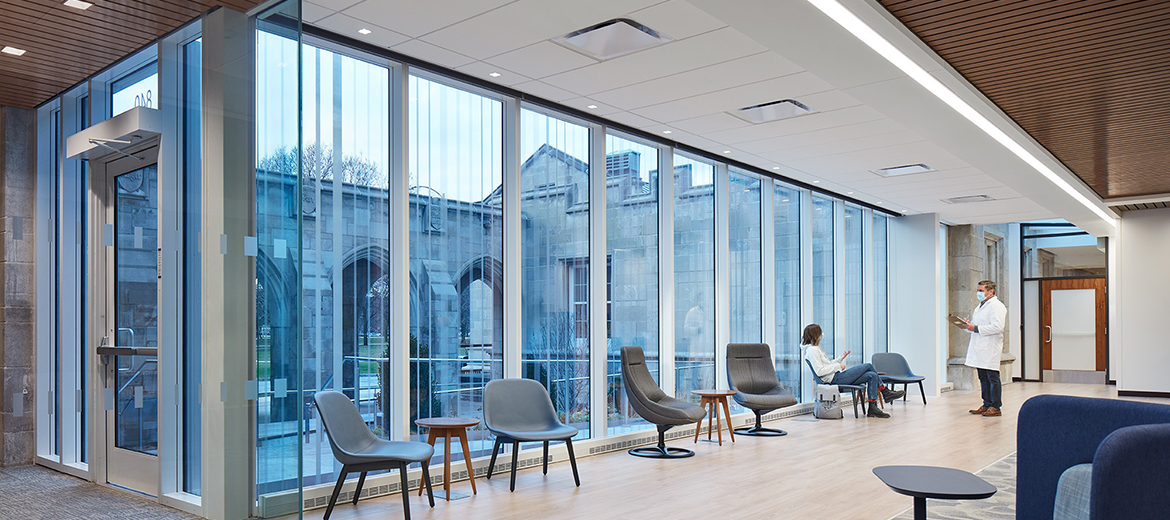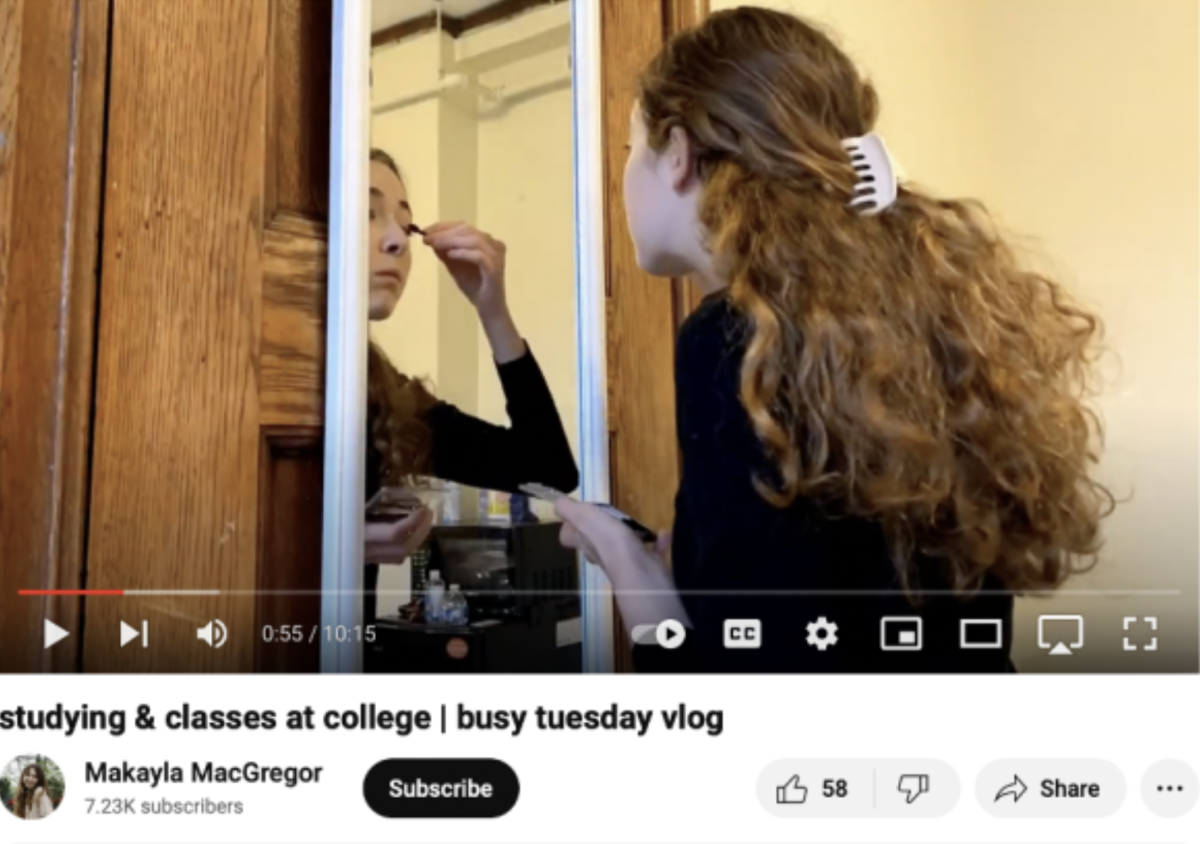GC: A lot of your molecular engineering research focuses on computer chips. Can you describe your work in three sentences or less, as if you were explaining it to a political science major?
PN: The size of the device is now on the molecular level, so it’s kind of consistent with molecular engineering. The traditional tools and materials that have been refined over the last three decades to make faster and more powerful computer chips are running out of steam. There are materials called self-assembling materials that spontaneously make very small structures, and so we try to figure out ways to get those materials to organize into patterns that are then useful for making devices.
GC: You must be a computer junkie.
PN: No, I’m actually totally the opposite. I’m a technophobe. I really don’t like the imposition of this thing [motions to his computer]—the expectation now is whenever it beeps I’m supposed to do something.
GC: So I shouldn’t even ask if you’re a Mac or PC?
PN: I have favorite companies that I work with, which probably influences me more than anything, but they’re all the same. There are Intel chips in every computer. What’s more disturbing is that the biggest market is the gamers. That’s who drives the development of the faster and faster machines. It benefits all the trailing interests—visualization of molecules, drug development, data mining for all kinds of scientific enterprise…that’s all secondary. The money is in the gamers.
GC: How does it feel to be one of a handful of engineers at this university?
PN: It feels great! Hopefully we’ll grow in size pretty quickly—there are four of us now and that was the reason for coming: to define a new discipline or way that engineers are educated and the way engineering research is conducted.
GC: What were you thinking when you were asked to be a part of the Institute for Molecular Engineering?
PN: It was fairly difficult to conceive what was meant, since it’s so different, it’s like, “Wait a minute. You’re starting engineering from scratch and it’s not going to have traditional departments?” Anyone would find that very interesting. Then coming to visit here and meeting everyone from the administration to all the faculty we met with, the level of enthusiasm was overwhelming. Really. And then you get here and realize it may be one of the biggest initiatives the University has taken in maybe 50 or 80 years, and you go, “OK. This is serious.”
GC: I think a big part of the interest comes from the University’s reputation as a theoretical powerhouse, and this is one of the first initiatives into a “practical” field.
PN: What we work on has to have tangible applications. It may be so far away that its still a pie in the sky, but it has to be there, and that’s where I think the difference is—in the sciences it might not have to be there and it’s perfectly OK to study something for its own sake, and I like that too, but I generally have to have that connection to keep me going.
GC: Aside from computers, you’ve also worked on tissue engineering in corneal prosthetics?
PN: [Corneal] prosthetic devices weren’t working so well, so we thought we were missing some design aspect. We thought it was likely the physical structure and properties—that you couldn’t just try to make better and better chemistry surfaces and get the epithelium to re-grow and re-function. So we spent a lot of time trying to prove that the topography alone was important. That seems obvious now, but in the past everything in biology was much more chemistry-focused than physical property–focused.
GC: I’m not sure if there’s any overlap, but I just read about something that came out of Argonne—the first FDA-approved bionic eye. It had an artificial retina, and it seems like the corneal work must have been very advanced.
PN: Ah, I didn’t see that! That’s the really sexy stuff. How do you hook up the electrical signals in the thing you’ve implanted into the back of the eye and get them to actually transmit signals into your optic nerve so that the brain interprets it as images? And they get those things to work? It’s unbelievable. I mean really—it’s unbelievable.
GC: What are your plans for the next few years?
PN: We’re trying to establish a graduate program and shortly thereafter an undergraduate program, so we’re just beginning to think about recruiting our first-year graduate students. So maybe in two years we’d like to have our first undergraduates, our first majors in molecular engineering.
See the full interview feature here.









